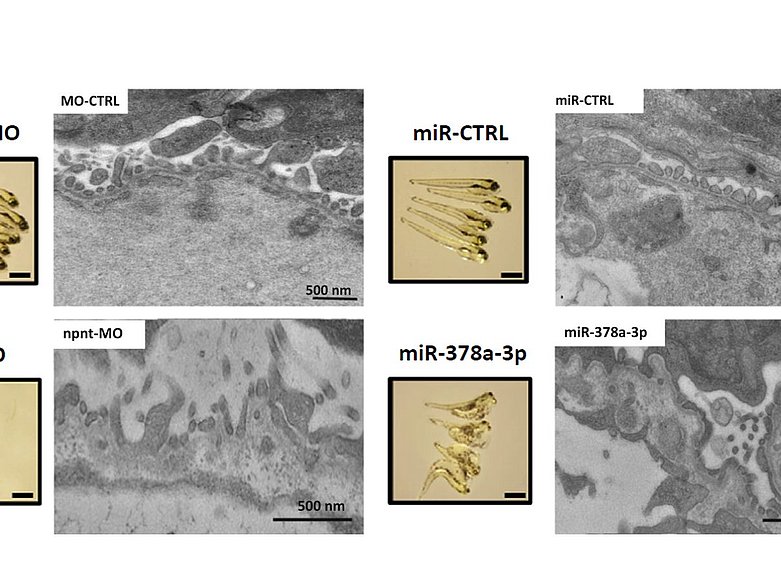The glomerular filtration barrier of the kidney consists of glomerular endothelial cells, glomerular basement membrane and podocytes. Similar to other organs, microRNAs regulate protein expression in the kidney through mRNA degradation and inhibition of transcription.
Our research group investigates the role of podocyte microRNAs for glomerular integrity and cell interaction. With the help of cell culture experiments, zebrafish model, mouse model as well as the analysis of patients’ urines and kidney biopsies, we identified podocyte microRNAs that regulate glomerular function on different levels. Furthermore, we have evidence for a glomerular crosstalk. Knockdown of podocyte Vascular Endothelial Growth Factor A (vegf-A) caused glomerular endotheliosis whereas knockdown of podocyte nephronectin induces a thickening of the glomerular basement membrane an increased leakiness of the glomerular filtration barrier. A loss of endothelial proteoglycans causes podocyte damage.
Our research group further uses the zebrafish parabiosis model to search for circulating permeability factors that play a role in focal segmental glomerulosclerosis (FSGS), a special glomerular disease with heavy proteinuria.
Most recently, we want to establish a 3D co-culture system of glomerular cells ex vivo. The goal of this project is to develop glomerular structures that resample the in vivo condition more than conventional cell culture models. Glomerular spheroids are initially generated in vitro and later vascularized in a rat model. Furthermore patient derived podocytes are used in the coculture to bring the model on a personalized level and to probably foresee individual patient respond to treatment.

Group leader
Scientists
Tecnicians
Alexandra Ohs
Graduate students
Carmen Popanda
Victoria Rose




